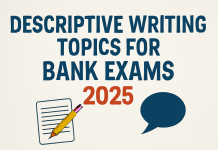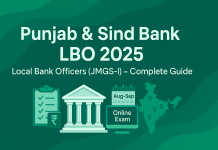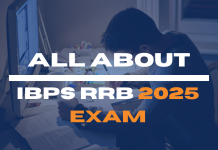India is an agrarian country. According to the “Evaluation of Agricultural Census Scheme-2021” conducted by ICAR-Indian Agricultural Statistics Research Institute (ICAR-IASRI), New Delhi, over two-thirds of the country’s population resides in rural areas, and approximately 70 percent of rural households still rely on agriculture as their primary source of income. Those engaged in cultivation, often termed as operational holders, typically experience lower income levels. Nearly 85 percent of agricultural land holdings, categorized as operational holdings, are small and marginal. Consequently, government initiatives and development programs in the agricultural sector are frequently targeted towards supporting small and marginal operational holders due to their significant presence in the sector.
Even after being such a prominent sector of the society, agriculture sector still struggles to grow as an economy. To promote agriculture, other than establishing big agriculture firms or Banks like NABARD which provides loans to farmers and to ensure their growth, the Government also launches various schemes that help farmers from time to time. With Government Agricultural Schemes like PM KISAN Maan Dhan Yojana which is a pension fund scheme and Integrated Scheme for Agricultural Marketing (ISAM) which provides a competitive market to the farmers, the government ensures proper growth and development in the agricultural sector.

Agricultural schemes is one such topic that attracts a good amount of weightage in the exam under the ARD (Agricultural and Development) section in the NABARD exam. Today’s article is about various agricultural schemes launched by the Government of India. This is the part one of the agricultural schemes, part 2 of the same will be published soon in a later blog. There is a very high probability of this topic being asked in Phase 2 of the NABARD Grade A exam. Following are the various agricultural schemes launched by the Government of India.
Important government schemes in Agriculture sector
Pradhan Mantri Kissan Samman Nidhi:
Launched Date: December 01, 2018 (Announced in Budget 2019)
Pradhan Mantri Kissan Samman Nidhi (PM-KISAN) Scheme was announced on the budget session of 2019. This is a centrally sponsored Agricultural scheme that provides direct income support of rupees 6000 to the framers. This amount will be credited in three equal installments of rupees 2000 each. This income support will be transferred directly to the bank account through Direct Bank Transfer (DBT) of the farmers to save time and ensure transparency. State government/UT Administration will recognize the eligibility of farmers for the scheme.
Who are Eligible for PM-KISAN Agriculture scheme?
It will be given to all landholder farmers families in the country except the following.
- All Institutional Landholders.
- Farmer families in which one or more of its members are from the following:
- All serving or retired officers and employees of Central/ State Government Ministries /Offices/Departments and its field units Central or State PSEs and Attached offices /Autonomous Institutions under Government as well as regular employees of the Local Bodies.
- Former and present holders of constitutional post.
- All Persons who paid Income Tax in the last assessment year.
- Ministers/ State Ministers, MPs (Lok Sabha & Rajya Sabha), MLAs (SLA & SLC) – Present or Former
- Mayors of Municipal Corporations, Chairpersons of District Panchayats- Present or Former
- All superannuated/retired pensioners whose monthly pension is Rs.10,000 or more (Excluding Multi-Tasking Staff / Class IV/Group D employees)
- Professionals like Doctors, Engineers, Lawyers, Chartered Accountants, and Architects registered with Professional bodies and carrying out profession by undertaking practices.
PM KISAN Maan Dhan Yojana:
Launched Date: September 12, 2019 (Ranchi Jharkhand)
PM KISAN Maan Dhan Yojana is a centrally sponsored scheme for small and marginal farmers that owns less than two hectares of land. A minimum fixed pension of Rupees 3000 will be provided to all the eligible small and marginal farmers after they attain the age of 60 years. It aims to cover around 3 crores of small and marginal farmers. This is a voluntary pension scheme. The entry age of this scheme is 18 to 40 years. The required monthly contribution can be varied from rupees 55 to rupees 200 by the beneficiary (Depending on the age of the entry into the scheme). Equal contribution (as the beneficiary contribution) will be made by the Centre into this scheme. LIC (Life Insurance Corporation of India) will manage the pension fund. The contribution can also be made directly from the benefits drawn from the PM-KISAN scheme. The beneficiary may exit from the scheme voluntarily or on the failure of contribution or on demise. A minimum period for voluntarily exit from this scheme is 5 years of regular contributions.
Who else is eligible to get the Pension of the beneficiary/Subscriber?
The spouse is also eligible to get a separate pension of Rs.3000/-per month provided he/she is making separate contributions to the Fund. In the case of the death of the subscriber during the period of contribution, the spouse shall have the option of continuing the Scheme by paying regular contributions. In a case the spouse does not wish to continue, the total contribution made by the farmer along with interest will be paid to the spouse. In a case of no spouse, the total contribution (along with interest) will be provided to the nominee. In case of the death of both farmer and spouse, the accumulated corpus shall be credited back to the Pension Fund.
Pradhan Mantri Annadata Aay Sanraks Han Abhiyan (PM-AASHA)
Launched Date: September 12, 2018
For the welfare of the farmers, the Government of India has taken an unprecedented step by launching Pradhan Mantri Annadata Aay Sanraks Han Abhiyan (PM-AASHA) scheme. It is a new umbrella scheme that aims to ensure lucrative prices to the farmers for their produce. There are three main components of this scheme. We will discuss it one by one
PSS (Price Support Scheme):
Under the Price Support Scheme (PSS), the physical procurement of pulses, oilseeds, and Copra will be done by Central Nodal Agencies with the proactive role of State governments. In addition to NAFED, Food Cooperation of India (FCI) will take up PSS operations in states /districts. As per norms, the expenditure of the procurement and losses due to procurement will be borne by the Central Government.
PDPS (Price Deficiency Payment Scheme):
Under the Price Deficiency Payment Scheme (PDPS), all oilseeds will be covered for which MSP is notified. In this direct payment, the difference between MSP and the selling/modal price will be made to pre-registered farmers selling his produce in the notified market yard will be made through a transparent auction process. Payment will be done directly into the farmer’s registered bank account. It does not involve any physical procurement of crops as farmers are paid the difference between the MSP price and Sale/modal price on disposal in the notified market. As per norms, the support by the central government for PDPS will be provided.
PPPS (Pilot of Private Procurement & Stockist Scheme)
In the case of oilseeds, States will have the option to roll out PPSSs in select districts. Under this, a private player can procure crops at MSP when market prices drop below MSP and whenever authorized by the state/UT government to enter the market. The private player will then be compensated through a service charge up to a maximum of 15% of the MSP.
Integrated Scheme for Agricultural Marketing (ISAM)
Launched Date: April 01, 2014
Integrated Scheme for Agricultural Marketing (ISAM) scheme was launched by the central government under the Ministry of Agriculture and Farmers welfare. The Scheme aims to provide a competitive market to the farmers and to ensure that high-quality food is provided to the consumers. The total budget that has been allocated for ISAM is 4548.00 crores, out of which 4000 crores is for AMI, 12.00 crores for MRIN, 6.00 crores for SAGF, 500.00 crores for ABD and 30.00 crores has been allocated for NIAM.
The objective of the scheme is
- To promote training, research, education, extension and consultancy in the Agri-marketing sector.
- To develop agricultural marketing infrastructure
- To promote innovative and latest technologies in agricultural marketing infrastructure
- To encourage private and cooperative sector investments
- To create scientific storage capacity for storing farm produce
- To ensure a price to the farmers justify the quality of the produce
- To create general awareness and provide training to farmers, entrepreneurs, market functionaries and other stakeholders on various aspects of agricultural marketing.
Its various Sub-Schemes are:
- Agricultural Marketing Infrastructure (AMI)
- Marketing Research and Information Network (MRIN)
- Agri-Business Development (ABD) through Venture Capital Assistance (VCA)
- Project Development Facility (PDF)
- Strengthening of Agmark Grading Facilities (SAGF)
- Choudhary Charan Singh National Institute of Agriculture Marketing (NIAM).
Krishi Kalyan Abhiyan Scheme:
Launched Date: July 31, 2018
With a vision of doubling the farmer’s income, the Central Government has launched the Krishi Kalyan Abhiyan Scheme which advises farmers on improving their farming techniques and raises their incomes. The Krishi Kalyan Abhiyaan will be undertaken in 25 Villages with more than 1000 populations each in Aspirational Districts identified in consultation with the Ministry of Rural Development as per directions of NITI Ayog. The overall coordination and implementation in the 25 villages of a district are being done by Krishi Vigyan Kendra of that district.
Action Plan of Krishi Kalyan Abhiyan are
Various activities that has been undertaken to promote practices and enhance agriculture income are as follows:
- Distribution of Soil Health Cards to all farmers
- 100% coverage of bovine vaccination for Foot and Mouth Disease (FMD) in each village’
- Distribution of Mini Kits of pulses and oilseeds to all
- Distribution of Horticulture/Agro Forestry/Bamboo plant @ 5 per family (location appropriate)
- Demonstration program on Micro- irrigation
- 100% coverage of Sheep and Goat for eradication of Peste des Petits Ruminants (PPR)
- Artificial insemination saturation.
Now that the NABARD Grade A exam 2024 is anticipated to be announced this year, it is advisable not to wait for the official notification. Instead, make the most of this time by proactively engaging in the early preparation, starting with NABARD Grade A mock tests and Previous year papers from ixambee. Stay updated on current affairs, especially those related to agriculture, rural development, and the economy. This is a vital component of the NABARD Grade A exam, and continuous awareness will enhance your performance in the General Awareness section. ixambee provides daily/weekly GA updates on Beepedia. To assist you with the NABARD Grade A exam preparation, ixamBee is here with the NABARD Grade A Online Course that is based on the latest exam pattern which has been designed by our subject experts, who are ex-NABARD, ex-RBI, ex-Bank POs. The NABARD Grade A Online Course at ixamBee has been curated in the most comprehensive yet focused way.
By adopting a proactive approach during this pre-notification period, you can significantly enhance your preparedness for the upcoming NABARD Grade A exam and increase your chances of success. All the Best!
Related Articles:
NABARD Grade A 2024: Decision Making Syllabus and Preparation
Best Books For NABARD Grade A & B Exam Preparation
Get Free Online Test Series, GK updates in form of Beepedia, BeeBooster, as well as latest updates for Bank PO, Bank Clerk, SSC, RBI, NABARD and Other Government Jobs.
оформить займ на карту сбербанка онлайнзайм денег в интернетевзять займ без проверки кредитной истории














